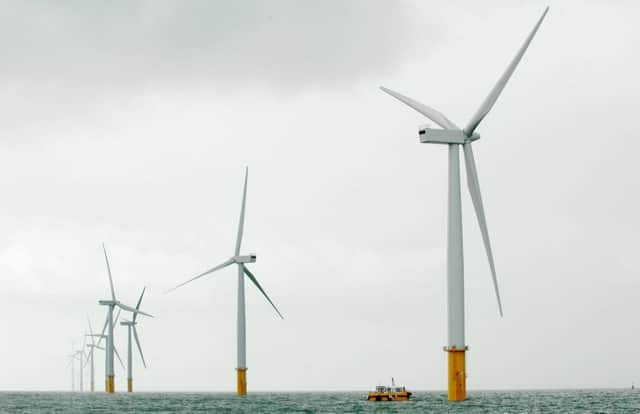How robots could revolutionise Scotland's offshore wind industry


Those living along the coast of Scotland could soon witness the arrival of an army of robots built to service the country’s offshore windfarms.
These devices are set to revolutionise how we generate power – with Scottish innovators among those leading the way to cheaper, cleaner energy for all.
Advertisement
Hide AdAdvertisement
Hide AdRobotics developers north of the Border have an unrivalled opportunity to steal an early march in this rapidly developing sector, with 4GW of offshore wind energy approved for development - enough to power 3 million homes.
The country’s track record in offshore innovation is well known. From Statoil’s floating wind demonstration, Hywind, off the coast of Peterhead, to the EnFAIT tidal power project in Shetland, we are already pioneering several technologies that can lead to a significant reduction in the cost of renewable energy from offshore locations.
For robotics developers, the immediate opportunity lies in operations and maintenance, currently a significant expense for offshore renewables.
By their very nature, these developments tend to be built where there is abundant natural resource – which introduces challenges in accessing wind farms using boats and getting staff onto turbines for essential operations.
Developing autonomous robots that can navigate these conditions and provide accurate information on the operation and condition of these devices, or even carry out basic tasks, could significantly decrease the operating cost of offshore renewables.
Substantial cost savings will result from the reduced requirements to use offshore vessels and crews, improving safety and reducing dependency on weather conditions.
This work has already begun. Glasgow-based Offshore Renewable Energy (ORE) Catapult is working with 12 companies who are making the most of our testing facilities to develop robots specifically for this task.
Our 7MW offshore demonstration turbine in Levenmouth, Fife, is a prime example, allowing developers to test their designs with a view to introducing them to the market.
Advertisement
Hide AdAdvertisement
Hide AdFrom drones and blade crawlers to autonomous underwater vehicles that inspect foundations and sub-sea structures, the variety is as impressive as the technology itself. Robots could even lead to a truly 24/7 service – helping keep turbines turning even as their operators sleep.
Autonomous boats – ‘motherships’ – that travel to offshore developments with a battery of technology to service an entire field all in one go are a very real possibility, while some are already talking about developing hub stations that can operate entirely independent of human interaction.
Look beyond operations and maintenance and you begin to imagine even greater possibilities.
Seabed surveys could be carried out round the clock to find the best places to position new offshore developments – taking into account environmental, tidal and seabed conditions to determine which areas are most appropriate.
From there, robots could even be used in the installation of such developments, assisting with tasks such as cable installation.
The possibilities are endless – and with countries all across the world starting to invest more heavily in offshore renewables, the potential for this sector can only grow.
Done right, Scotland can take a real lead in the development of a robotics sector designed specifically for the offshore renewables sector, creating many high-value technical jobs.
Andy Kay is a project engineer at Glasgow-based Offshore Renewable Energy Catapult
